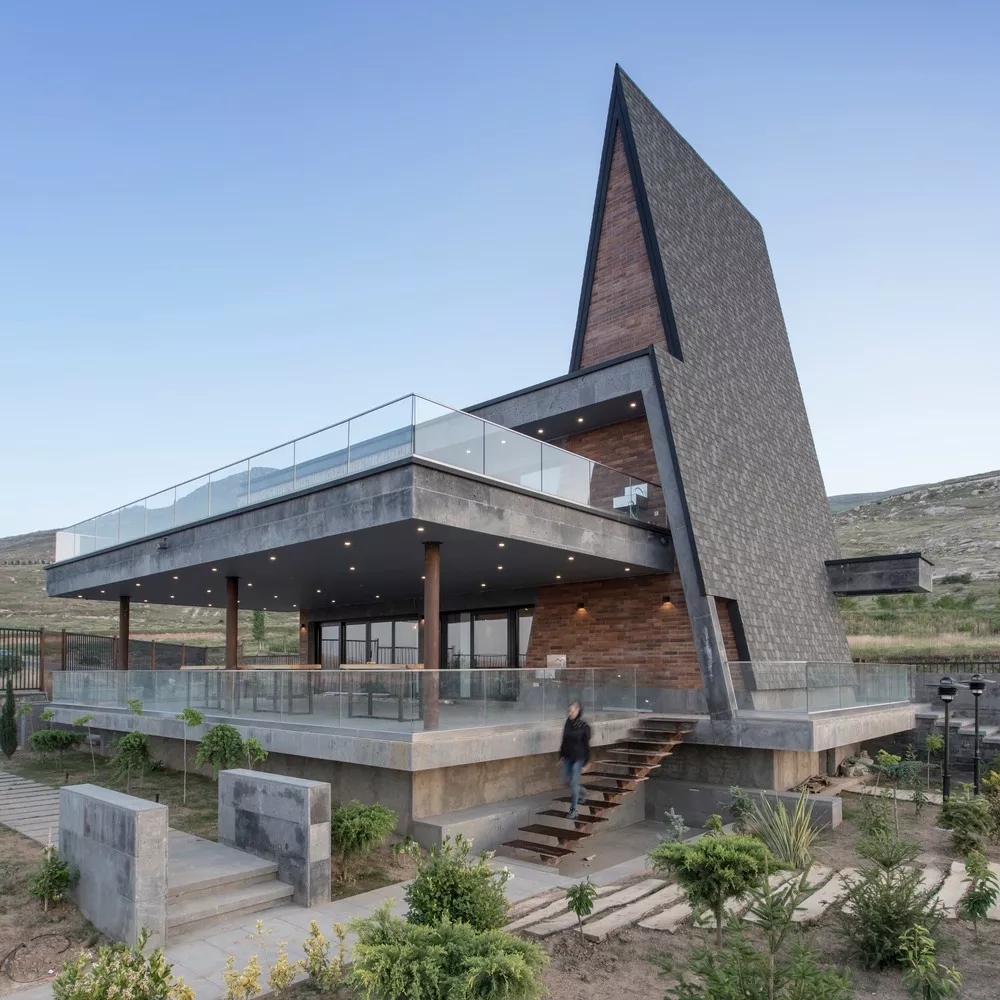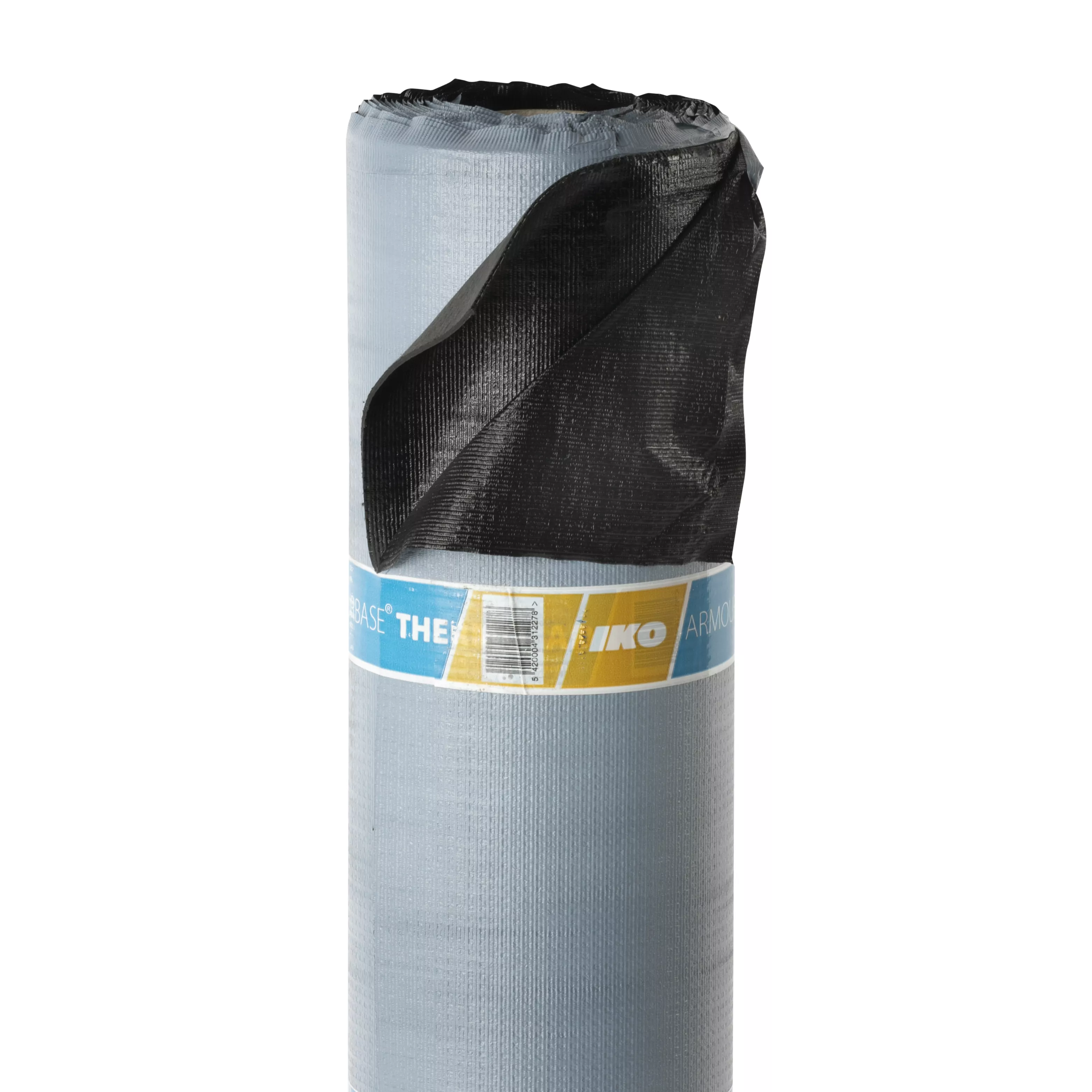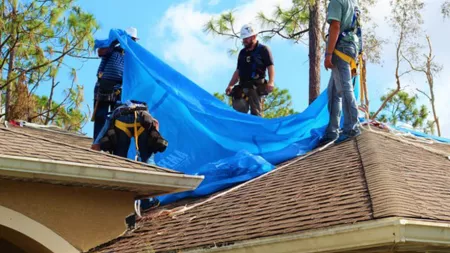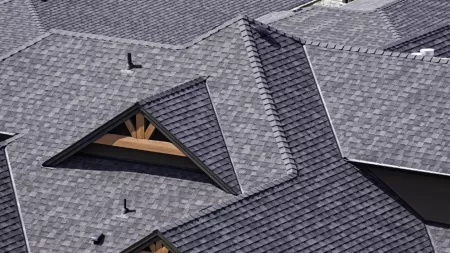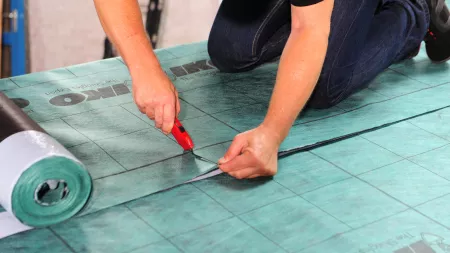
Roof problems (part 1): moisture related issues
A safe and healthy roof is a crucial part of each building. When one or more of the following roof problems occur, we know that the safety of your roof is at risk:
- A leaking roof
- Deteriorating roofing materials
- The roofing materials are moving or shifting to an accepted degree, or the shape of material is changing.
- The roof has an unsightly appearance.
The causes of roofing and flashing problems usually spring from design, from the materials selected by the builder or architect, and finally from the way the contractor applied the roofing and flashing.
Moisture and Roofs
Contemporary architects and building engineers recognize that their systems are vulnerable to moisture due to 3 sources:
- Rain penetration
- Entry of water vapor
- Ice damming
To avoid these dangerous situations, certain building science principles behind the problems of moisture and roofing should be understood.
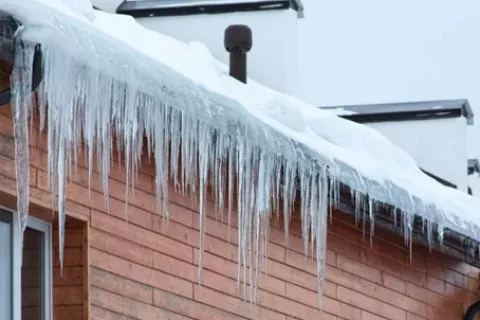
Rain Penetration
Roofs leak when water finds an opening and sufficient force is applied to drive the water inwards. To eliminate rain penetration the roofer must either close the openings or neutralize the driving force. A sloped bitumen shingle roof seldomly leaks because gravity offsets the forces acting to move the water inward. Overlapping the shingles limits the direct entry of rain drops by impingement.
Gravity acts to move water outward down the roof slope. The greater the vertical height of the shingle lap, the greater the gravitational force. Leakage occurs when the roof is not sloped enough to let the force of gravity resist the wind force driving the rain through the openings. Generally, the only way to control water penetration on low slope roofs is by applying a continuous waterproofing membrane.
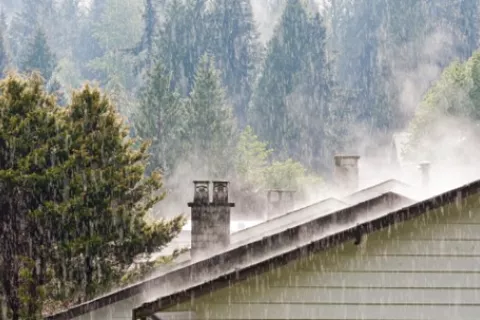
IKO offers a few solutions for such critically low-pitched roofs:
1. Self-adhesive Cambridge Xtreme shingles can already be installed under certain conditions from a pitch of 9,5 degrees.

2. The IKO Thermo System concept can even be installed from 4 degrees, thanks to the Armourbase Thermo AD underlayment. This roll can be heated with a torch, which makes it possible to install the shingles without nailing.
!!! Attention: In case of low-pitched roofs, avoid ponding water. Roof leaks will occur, and damage will be considerable!
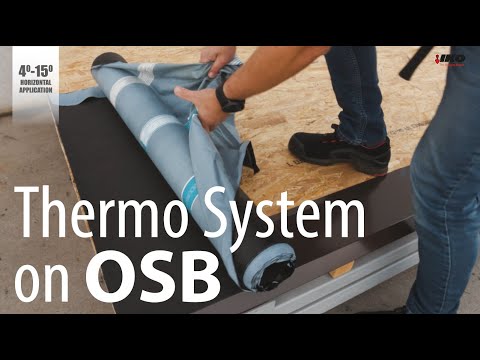
Water Vapor Penetration
Condensation on the inside surface of roofing materials is caused by water vapor moving through the ceiling system. It condenses on roof materials if their temperature is lower than the dew point. This happens during winter when the inside air has a higher moisture content and vapor pressure than the outside air. Humidifying the house can make the condensation worse.
Moisture severely damages building materials, causing them to deform and deteriorate. It can cause curling, cupping, and shrinkage on roof surfaces with bitumen shingles, corrosion on metal flashings and rotting of wooden roof structures. Builders should use a roof system designed to prevent the entry of water vapor by both diffusion and air leakage, or one that can remove the vapor by ventilation.
<<< Condensation forming in attic space.
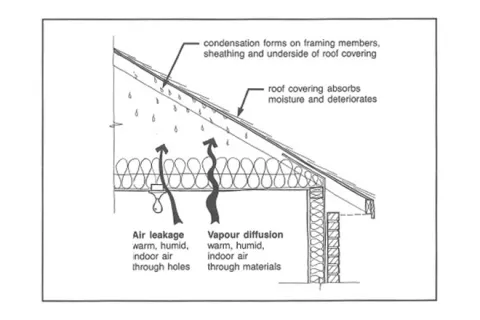
Proper ventilation is the key factor in how to avoid moisture from the attic. An excellent ridge ventilation is IKO Armourvent Multi. IKO Armourvent Multi and Multi Plus are ventilation systems that provide you with a fabulous roof without visible appliances. The unique design consists of a thin but ultra-strong profile ensuring a smooth, straight, and virtually invisible roofline.
IKO ventilation on your roof offers quite some benefits:
- Extend the life of your roof and of your shingles
- Increase your living comfort
- Regulate the moisture in your roof
- Allow excess heat and water vapor to escape from the roof
- Allow air to circulate between insulation and roof deck
- Prevent humidity from damaging the roof construction
- Cool down the roof in hot weather conditions
- Prevents ice dams after snow
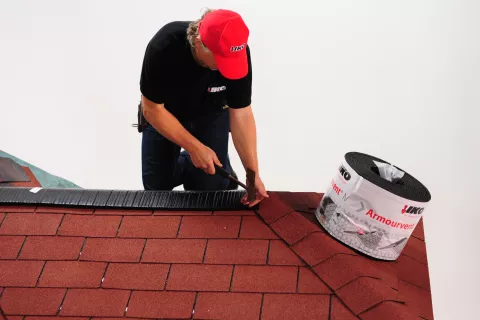
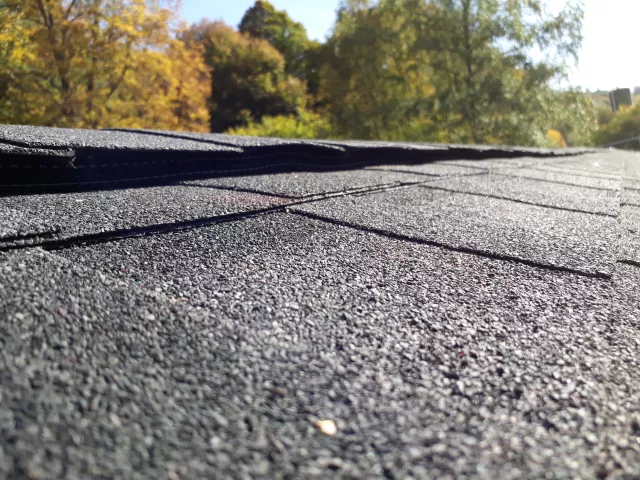
Want to learn more about ventilation?
Take a look at ways how and reasons why to ventilate your roof/attic.
If we look from inside the house structure, vapor barriers and air barriers prevent water vapor from moving to the roof system. Some of these techniques include:
- Installing a vapor barrier of 0.15 mm polyethylene on the warm side of the insulation in the ceiling
- Cutting air leakage to the attic space by sealing holes leading to and from the house below
It is impossible to completely prevent the passage of water vapor through the ceiling and into the roof structure. Therefore, it is important to try to remove the vapor and deal with the condensation. This is done by providing an unobstructed vent area of not less than 1/300 of the insulated ceiling area.
Locate intake vents/screens at the soffit openings, making sure that the ventilation area is evenly distributed and as high as possible at the ridge. This method takes advantage of the chimney stack effect in promoting good air movement.
Ventilation at the soffit and ridge >>>
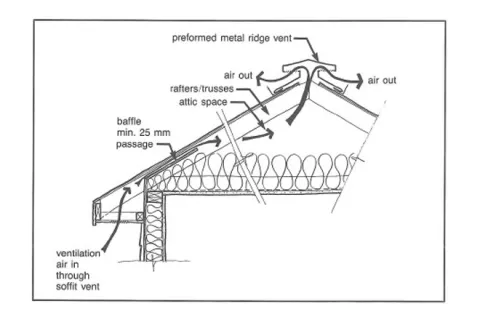
Moisture during construction
Moisture can also enter roofing materials while they are stored on the construction site. Roofers should protect water absorbing materials, such as underlayment and wood (OSB, plywood boards), from rain or long periods of humidity. It is also not recommended to install very wet bitumen shingles on the roof.
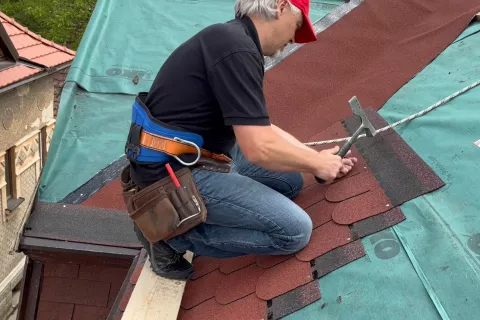
Ice Damming
Ice damming is the build-up of ice at the edge of the roof, caused by heat escaping from the house and melting snow. This melted water flows down underneath the snow covering the roof. As it reaches the outer edge of the eave over the unheated soffit, it freezes, creating an ice dam. The ice dam stops the flow of melted water from reaching the eave. Ice then builds up in the form of icicles and slabs, and the melted water can back up through the shingles and leak into the attic (see drawing). Ice build-up also causes structural damage to the eave and the roof and can be a potential hazard to passers-by.
Water leakage caused by ice dams >>>
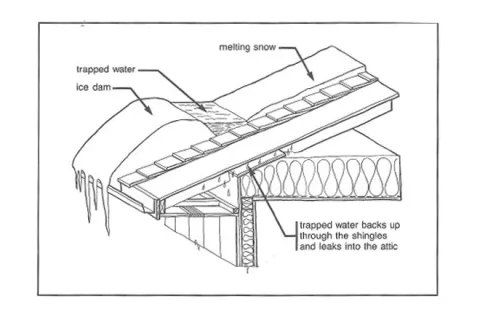
Take the following measures to help prevent ice dam problems:
- Provide eave protection, and impervious IKO Armourbase Stick underlayment, at eaves and in the valley intersections, to stop water from penetrating through the shingles because of ice damming (see drawing). Armourbase Stick has good waterproofing properties: it is W1 ranked and has average values of 4 m in the water column test. Thanks to the bituminous compound, the underlay can enhance its waterproofing behavior and form an excellent prevention against ice damming.
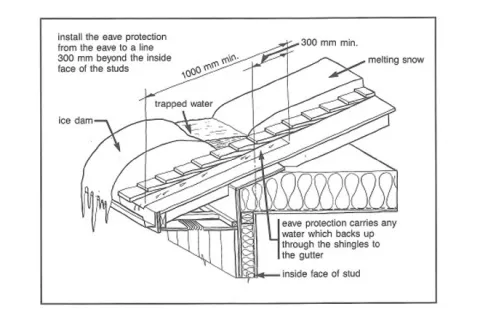
- If the roof is insulated between the rafters, don't forget the ventilation gap above the rafters, which is created by the contra-batten, and sufficient intakes at the eaves.
- With a cold roof system, keep the attic space cold by insulating it from the warm house interior. This will reduce or eliminate snow melting.
- In case there are no snow stoppers mounted on the roof and the snow slides freely and falls from the roof, ensure that the outer edge of the gutters is lower than the slope line to allow snow and ice to slide clear (see drawing). It must always be safe, to avoid danger for passers-by.
Place gutters below the slope line to allow snow and ice to glide clear. >>>
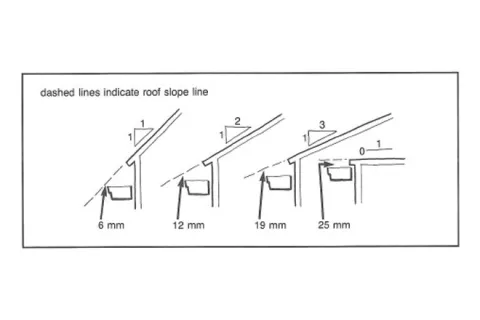
Following these guidelines will help you reduce the risk of roof problems. More roof problems such as typical roof failures and flashing problems will follow in the next blog. Stay tuned!

